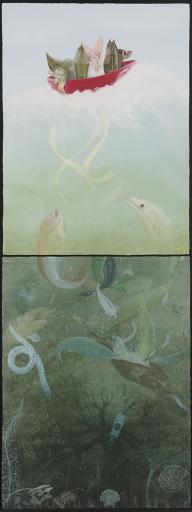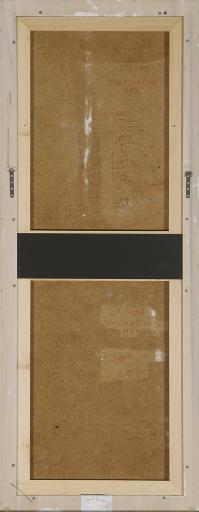Diaspora, Tom Knechtel
Artwork Overview
Tom Knechtel, artist
born 1952
Diaspora,
1987
Where object was made: United States
Material/technique: oil; panel
Credit line: Gift of Sam and Connie Perkins Collection
Accession number: 2021.0066
On display: Michaelis Gallery
If you wish to reproduce this image, please submit an image request



